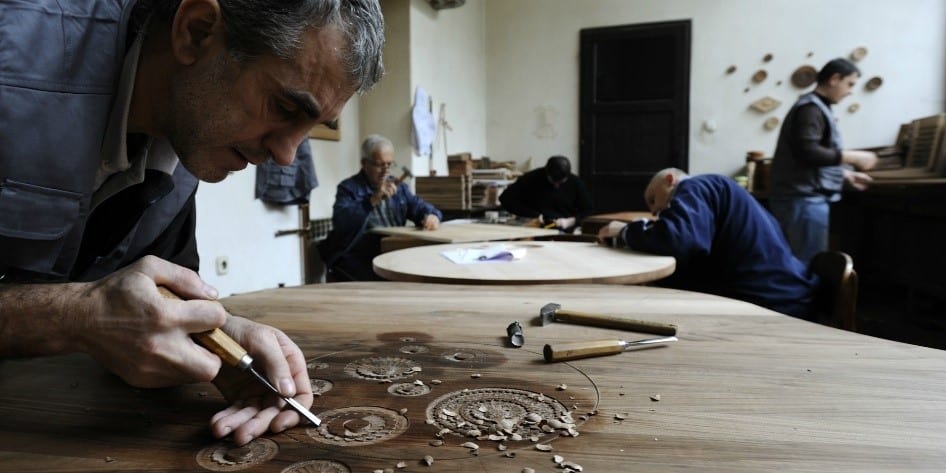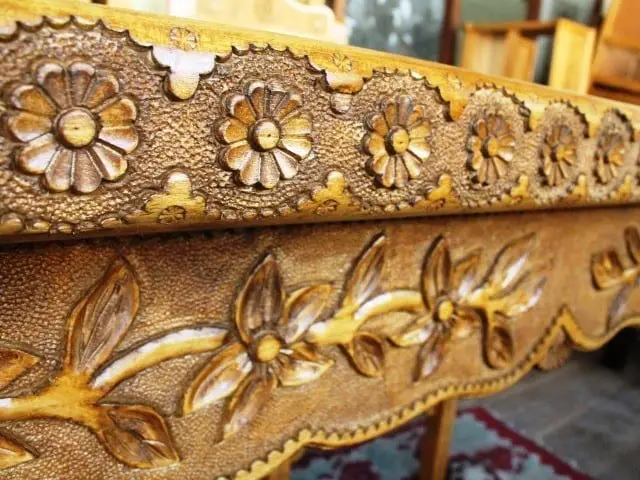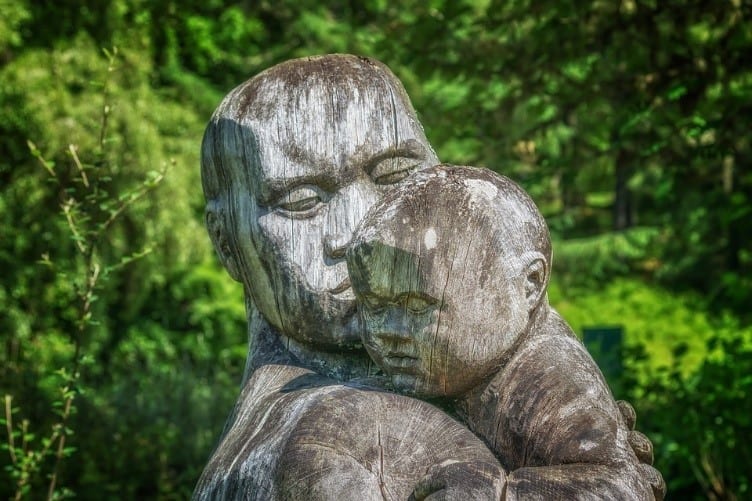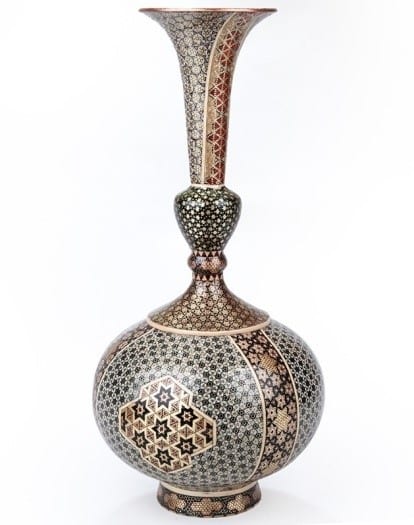Nestled among the spectacular canyons and peaks of some of Bosnia and Herzegovina’s highest mountains, the small town called Konjic has earned global recognition for bearing centuries-old traditions in woodcarving.
Inscribed on the Representative List of Intangible Cultural Heritage of Humanity in 2017, Konjic woodcarving is widely spread as an occupation, as well as a hobby of the local community.
Covering a territory of 51,129 square kilometers (19,741 square miles), the country of Bosnia and Herzegovina was subjected to severe ethnic tension just three decades ago.
With a population of approximately 4,364,574 people back in 1991, the 2001 census of 3,922,205 people is a solid proof of the consequences of the ethnic tension that lead to massive ethnic cleansing campaigns.
Snuggled between the mountains of Prenj, Bjelašnica and Bitovnja, the town of Konjic has an estimated population of 26 381 people based on 2013 census.
Konjic woodcarving is here to stay, proving that love and talent make one of the greatest combinations ever possible – for love alone may not be able to save the world but together with talent, all boundaries and difficulties can be melted away.
Acknowledged as an equally economically and ecologically viable craft, Konjic woodcarving enchants the contemplators not only because of the exquisiteness of the carvings but also because of the incredible stories of the people who have nurtured the ancient tradition into a local craft of highest perfection.
Konjic Woodcarving as a Ray of Light in Times of Darkness
Bosnia and Herzegovina is a European country located in the western Balkan Peninsula.
The town of Konjic is situated approximately 35 kilometers away from the capital of the country – Sarajevo.
Being triangular in shape, Bosnia and Herzegovina’s neighboring countries include Croatia on the north, south, and west; Serbia on the east; and Montenegro on the southeast. The country is also bordered by the Adriatic Sea on the southwest.
It wasn’t before the late 1995s that the country finally signed the Dayton Accords peace agreement after years of ethnic tension in the region that lead to horrific ethnic cleansing campaigns between 1992 and the end of 1995.
The ethnic campaigns brutally took away the lives of thousands of people. As a result of the violence, more than two million of the population in much of Bosnia and Herzegovina was displaced.
“I realize that what happened in Bosnia could happen anywhere in the world, particularly in places that are diverse and have a history of conflict. It only takes bad leadership for a country to go up in flames, for people of different ethnicity, color, or religion to kill each other as if they had nothing in common whatsoever. Having a democratic constitution, laws that secure human rights, police that maintain order, a judicial system, and freedom of speech don’t ultimately guarantee long-lasting peace. If greedy or bloodthirsty leaders come to power, it can all go down. It happened to us. It can happen to you,”
Savo Heleta, author of Not My Turn to Die: Memoirs of a Broken Childhood in Bosnia.
Considering the tension, pressure, and devastation in the region, it is almost hard to imagine how the locals managed to rise from the ashes of destruction and decentralization.
But one of the things that can keep the soul alive even in times of despair is preserving the ancestral traditions.
Just like a thin thread that weaves through the centuries and keeps people bound to their roots, ancient art and crafts have the power to let one’s mind roam away from the worries by sinking into a world where creativity and imagination don’t leave many places for pain.
Konjic woodcarving did not only manage to survive the tremors that shook the country but it also continued to play a vital role in the life of the local people.
Thus, by nurturing a sense of identity and community which was, undoubtedly, crucial for the population during some of the most merciless events in the history of the country, it is only fair to compare Konjic woodcarving to a ray of light in times of darkness.
Interestingly, Konjic is one of the earliest permanent settlements in Bosnia and Herzegovina. The rich history of the town of Konjic actually dates back to 4000 years ago.

Throughout the millennia, various cultures and religions interacted with the locals, and the multifaceted influences gradually lead to the enrichment of the cultural heritage in the region.
Tracing the Very Roots of Konjic Woodcarving
The very roots of Konjic woodcarving can be traced back into the 19th century.
The Konjic carving technique has been beautifully upgraded throughout the years but in its very essence and core, it remained untouched and unspoiled by the hands of time.
Being made exclusively by hand, Konjic wood carvings can be used for the decoration of furniture, small ornamental elements, and nonetheless, for further beatifying different pieces of interior design.
In fact, the beauty and elegance of a Konjic home are still being measured by the complexity of the traditional wood carvings that make part of the interior.
Most importantly, the tradition of artistic skills that give off Konjic woodcarving its unique appeal is passed and preserved from and for generations.
“Soul drawing in wood texture” – that’s how the bearers of Konjic woodcarving traditions refer to their craft.
Decorative ornaments can be seen as a tendency in the style of Konjic woodcarving. Moreover, these are so finely carved that the elements create a mesmerizing flow of pure harmony.
Carving of plant and geometric meshes brings arabesque to perfection in the craft mastered by the talented Konjic woodcarvers.
Floral motives consist of specimens typical for the region such as the grape vines but also different flowers.
Apart from the floral motives, there are also medieval motives, too. That’s related to the fact Konjic woodcarving started with the arrival of Austro-Hungarian monarchy, keeping in mind that medieval motives are intricately connected to the rich traditions of the former Austria-Hungary Empire.
The presence of Arabic, as well as specific geometrical patterns, brings the depth and hypnotizing shapes carved under the chisels of master Konjic woodcarvers to another level.
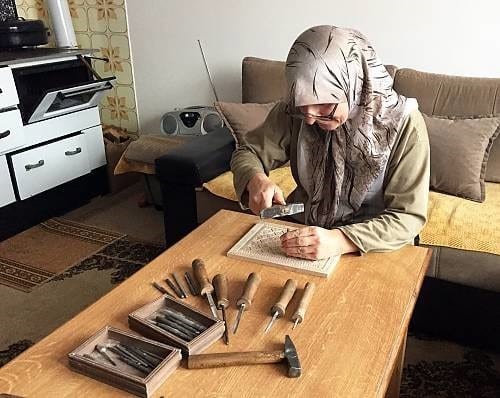
What truly sets Konjic woodcarving apart in terms of transmuting the skills of the gifted artisans is that both trained craftsmen, as well as those who practice the craft at home for a hobby, play an equally important role in preserving and conveying the traditions of the ancient craft.
However, even though virtually all the members of the local Konjic community have their own vital role in safeguarding the ancestral traditions in woodcarving, two names have left a sparkling trace in the history of the local craft – Nikšić, and Mulić.
Nikšić and Mulić were two families of the town of Konjic who managed to pass the craftwork over a total of six generations. Both the Nikšić’, as well as the Mulić’ family were dedicated woodcarvers.
Konjic Woodcarving and the Nikšić Family

The Nikšić family founded their woodcarving shop in 1919.
Despite the fact that Bosnia and Herzegovina had no status of an independent country back then since it was incorporated into the newly-established Kingdom of Serbs, Croats, and Slovenes in 1918, the Nikšić family finely carved furniture was exported to Milan and Paris, as the craftworks were highly valued for their high quality and captivating beauty.
The family-owned company of the Nikšić family is not merely functioning up-to-date but instead, it keeps spreading the fame of Konjic woodcarving throughout the globe.
The current owner of the family furniture company “Zanat”– Besim Nikšić, has truly raised the craft to another level.
He has incorporated the family traditions into the process of making modern-day furniture that stands apart from all the rest of the products on the market, keeping in mind that the fine carvings are still being made by hand.
“It’s love. Ever since I can remember, I used to come into my father’s workshop, I used to play with the leftover wood, I played with used nails, so the love for wood has remained stuck in my heart,”
Besim Niksic
Konjic Woodcarving and the Mulić Family

The Mulić family founded their woodcarving shop in 1929, just 10 years after the Nikšić family.
The incredible wood carvings of the Mulić family gained world recognition, too. The Mulić were engaged in carving chairs for the Pope.
Up-to-date, the Mulić family traditions in Konjic woodcarving are still alive, even though the founder of the Mulić record – Ismail Mulić, who was born in 1907, passed away in 1978.
Ismail Mulić completed woodcraft at the workshop of Sulejman Hadzizukic before he opened the family carving workshop in 1929.
He constantly strived for progress and was awarded multiple times throughout various exhibitions and fairs both in the country, as well as abroad.
In 1936, he introduced woodworking machines in his workshop that were the only ones of their kind in the country during the period between the two world wars.
The old house of the family was transformed into a museum of local woodcarving. Nevertheless, it was proclaimed movable heritage of Bosnia and Herzegovina.
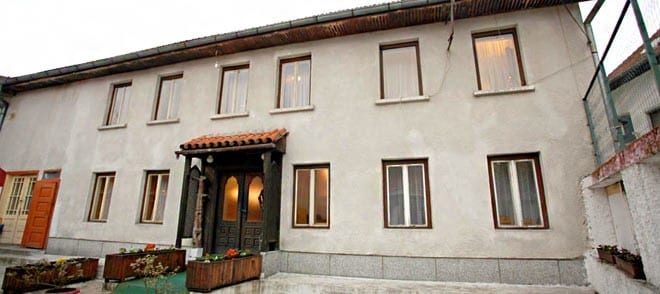
“The founder of this company is my grandfather Ismail”, says Sejfudin Bila who is Ismail’s descendant and current owner of the Workshop and Museum Mulicev Record. “I am the third generation in this company. Before the World War 2 grandfather exported goods to over 40 countries. Woodcarving is soul drawing in wood texture. Woodcarving is not a job, that is love,
Sejfudin Bila adds with a humble smile.
“Giving life once more to dead wood. We try to give it soul. To adorn homes worldwide. Besides aesthetics and functionality, that has spiritual energy. Which is very important. It fulfills the whole area in a positive light. People owning this furniture feel very nice”
beautifully sums up Bila
The Incredible Stories of Konjic Woodcarving: Final Food for Thought
Konjic woodcarving is a craft that knows no limits. It was and is still done by everybody: women, men, children, families, neighbors. It has been, is, and will remain a powerful tool for uniting the local people and bringing their sense of social identity to higher dimensions.
A decorative chisel making artwork – that’s just one of the beautiful ways the bearers of the ancient craft understand the magic of their masterpieces.
According to Konjic woodcarving masters, this type of art requires a very steady hand in the first place. But no less essential than the tremendous patience is the pure love for manual labor.
Since both intergenerational transmissions, as well as training on-the-job in traditional workshops, is equally important in preserving the wisdom and beauty of the craft of Konjic woodcarving, UNESCO’s recognition was an incredibly meaningful step towards a brighter future for the local population.
“You are not only improving your home, but you are also improving our world” – these heartening words convey the message of the Nikšić family who continues to cherish the legacy of their ancestors in Konjic woodcarving.
And as part of the future legacy of Konjic woodcarving, upgrading the craft while staying true to the ancient traditions is surely about to give rise to new masterpieces born through “soul drawing in wood texture.”
Being an ecologically sustainable craft, Konjic woodcarving also benefits the economy and the income brought by exporting exquisite handmade products is crucial for the region.
But above all, Konjic woodcarving has served as much more than a hobby or professional path for the local population who were faced with the ravages of war not that long ago as to be able to forget the scars left in their hearts.
Instead, Konjic woodcarving was the bridge that saved generations from becoming detached of their roots and traditions.
“The past is prophetic in that it asserts loudly that wars are poor chisels for carving out peaceful tomorrows”
Martin Luther King
